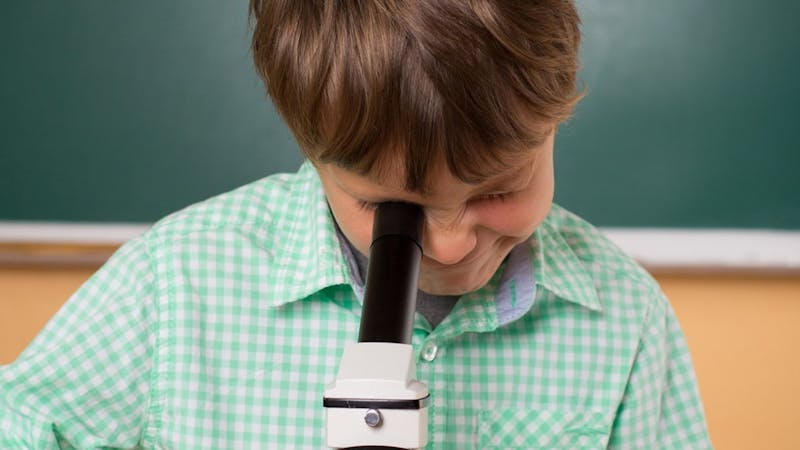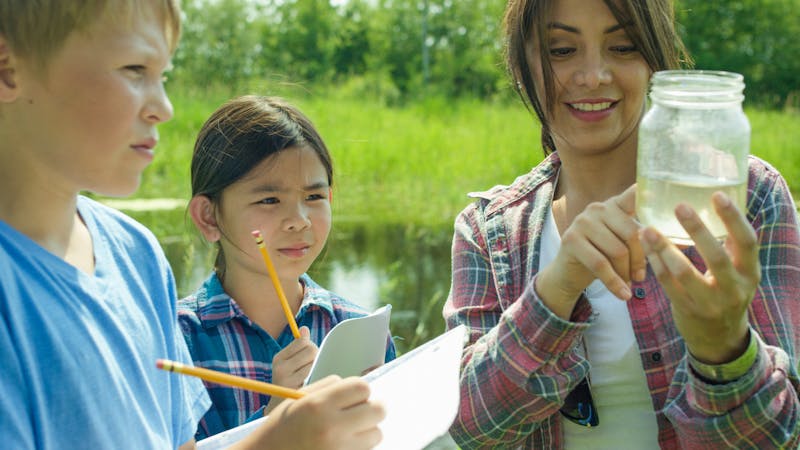23 Incredibly Easy Science Experiments & Activities to Try At Home
Author: Sarah Perowne
Last update: 3/2/2023

These simple at-home science experiments for kids and science activities are designed for students and homeschoolers to try, using everyday things you have around the house. Think scissors, cups, tape, recycled material, and kitchen scraps! We’ve chosen science experiments and activities that use a limited number of materials and that teach important scientific concepts.
Doing super simple science experiments at home is the easiest way to teach kids about problem-solving and engage their critical thinking prefrontal cortex. Kids are naturally curious, but we can help them develop more curiosity about how things work, so they can better handle challenges, hypothesize, and grow their confidence. Plus, science experiments are fun to do! So they'll be learning, laughing, and engaging all at once. Ready for some awesome fun? Here are our favorite science experiments to try at home with kids! And at the end, we’ve got some cool parent-verified science subscription boxes you can try at home, too!
5 Tips for Science Experiments at Home
- Get into character and add fun accessories if you have them, like lab coats and safety goggles.
- Have kids map out and hypothesize what they think will happen with a cheap notebook. They can even create and test their science experiments, writing the results in their lab notebook.
- Involve kids in every stage of the experiment and ask them questions!
- Remind kids it's okay to fail if the experiment didn't go as planned; that's the whole point of science and science experiments.
- Set up your space before the experiment, and ensure you have all the materials you need. You can use a science experiment checklist like this one from Science Sparks.
7 Easy Science Experiments for Home-Learning
The following science activities for kids to try are easy peasy lemon squeezy to plan, and the best part? You probably have all the materials at home, and most of them take less than 15 minutes! How's that for a 15-minute science experiment that will wow your kids?
This easy-peasy science experiment explores density and the difference between the air cells of eggs as they age. All you need is a cup of water and a few eggs.
Mimic the Earth's water cycle with this super cool science experiment by National Geographic Kids, and watch kids' curiosity pique as they independently explore.
This hands-on science experiment is suitable for all ages to explore chromatography, a technique for separating something into its individual components. It's an easy 7-step project, and you can get printable instructions at the Resource Center by Home Science Tools.
Did you know that turmeric contains a chemical called curcumin? Discover what happens when you mix turmeric, water, dishwashing liquid, or baking soda in this incredibly easy science experiment.
The Baking Soda Rocket challenge will ignite even the most curious minds, and you only need common household items and objects. Check out Fun Science's version for simple instructions for at-home learning.
Another great science experiment by Science Sparks. Go back in history and explore the ancient practice of sundials by making your DIY version using materials you have at home and in the garden.
Amaze kids with this chemistry experiment, and expand your scientific vocabulary by inflating, fizzing, expanding, and observing. The exploding balloon experiment illustrates how states of matter change when you mix a solid with a liquid to create gas, and all you need is an empty soda bottle, a balloon, and some simple household equipment.
11 Hands-on Science Activities for Older Kids (STEM)
Older kids love science! So engage them with these hands-on science experiments and activities for older kids. The following experiments and activities are STEM-related because science can be loads of fun, from creating models to learning about the inner workings of life or DIY gadgets for exploring the cycle of water; science is limitless, so try these at home!
Explore chemical reactions and heat with this foamy elephant toothpaste experiment by Scholastic. It's suitable for kids aged 6-10, and safety goggles are necessary.
It's a race against time to stop the chocolate from melting, using simple household items, a sunny day, and some chocolate. This STEM challenge encourages kids to experiment, predict, and determine which material best insulates the chocolate to stop it from melting.
Explore science and math with this freestanding team-building STEM experiment. All you need is 2 marshmallows, 1 meter of masking tape, a meter of string, and 20 uncooked spaghetti strands. The task is to build the highest freestanding tower using these materials in 20 minutes. Perfect for problem-solving and innovation!
If you're exploring water cycles in your science curriculum, try making your own with Science Spark's DIY Water Cycle Model. All you need is a mug, a big bowl, some plastic wrap, string to fasten, and a sunny day.
Want to learn about wind speed and how to measure it? Budding meteorologists will learn how to measure wind speed by constructing their own DIY anemometers. Play around and observe with this simple science experiment.
Did you know people in the early 1900s until around 1945used milk to make plastic ornaments? This chemistry science project will blow the minds of budding scientists. Experiment with how to make your own milk plastic, usually called casein plastic, with Nanogirl.
Move over DIY slime because this Magnetic Slime experiment is about to uplevel your at-home science activities. Head to Frugal Fun for a step-by-step guide. This science experiment isn't suitable for young kids and requires supervision.
Can you power an LED light with the acid in a lemon? Test out your theories with a Science-U @ homes science experiment; they've got a material list, directions, and a list of keywords for your science project.
This science experiment is part of the summer activities for kids series from the Summer Brain Series at the Chicago Museum of Science and Industry. You only need an empty pizza box, aluminum foil, plastic wrap, tape, scissors, a ruler to measure, a paper plate, and some food to cook in your DIY solar oven.
Everything in this world is made up of atoms. They are tiny and comprise protons, neutrons, and electrons, creating a spherical shape. Help kids comprehend this tricky concept by making your own atom model at home from Kids Activities, and wait for the questions!
Cool Science Subscription Boxes to Try at Home
At-home learning should never end. So, add a fun science lesson into the day with these at-home high-quality science subscription boxes; the best part is parents can learn too! If you want to work on STEM activities at home with your kids but need help figuring out where to start, here are the best STEM and science subscription boxes you can try, highly rated by homeschoolers and kids alike.
Sign up for a monthly groovy subscription starting at 28.95/month for their Young Creator Series for ages 4-7 or their STEMist series for 8+. Both series contain fun, hands-on projects focused on monthly STEM topics for young scientists to investigate, brainstorm, plan, and build their own creations.
Bitsbox is a monthly coding subscription box for kids that teaches children how to grasp real coding. They have different difficulty levels, and a new computer science concept is delivered each month with different coding projects for kids to choose from.
Green Kid Crafts takes hands-on learning seriously. Their STEM science boxes combine arts and science in fun projects and experiments. They even include a handy parent guide so you can help your child succeed, and they're passionate about sustainability.
Each monthly box from Flock Eco-Games contains a Beautiful Discovery subscription to engage your kid's senses with art, science, math, technology, and nature. The boxes are loved by parents and kids and are suitable for tweens too.
There are many awesome experiments and activities for kids to get stuck into and excited about science on this site. They've got a catalog of educational products to simplify your home science experiments, and their experiment kits come with everything you need to get testing, predicting, and analyzing.
Conclusion
We hope this list has helped you find some cool easy science experiments and activities you can use at home. Science is awesome, and we hope with this list, your children will be inspired, more curious about the world around them, and develop important scientific thinking that will help them explore and investigate for years to come!
- University of Texas Arlington (2021) Importance of Science Education in Schools
https://academicpartnerships.uta.edu/articles/education/importance-of-science-education.aspx - Harris, N. (2023) 9 Fun Science Activities for Preschoolers. Parents
https://www.parents.com/kids/education/math-and-science/9-fun-science-activities-for-preschoolers/ - The Teaching Cupboard - Teaching Science in a Play Based Classroom
https://www.myteachingcupboard.com/blog/teaching-science-in-a-play-based-classroom


